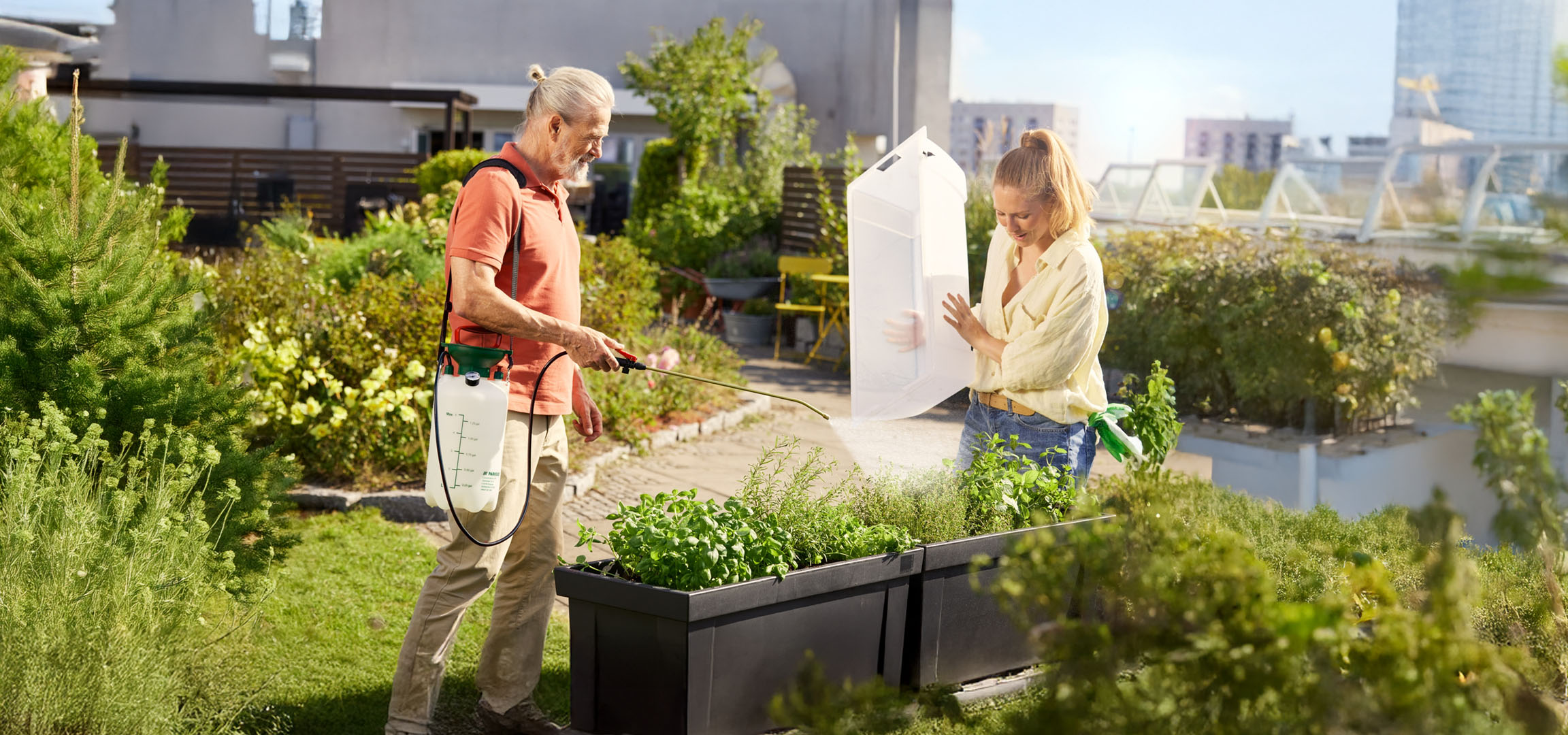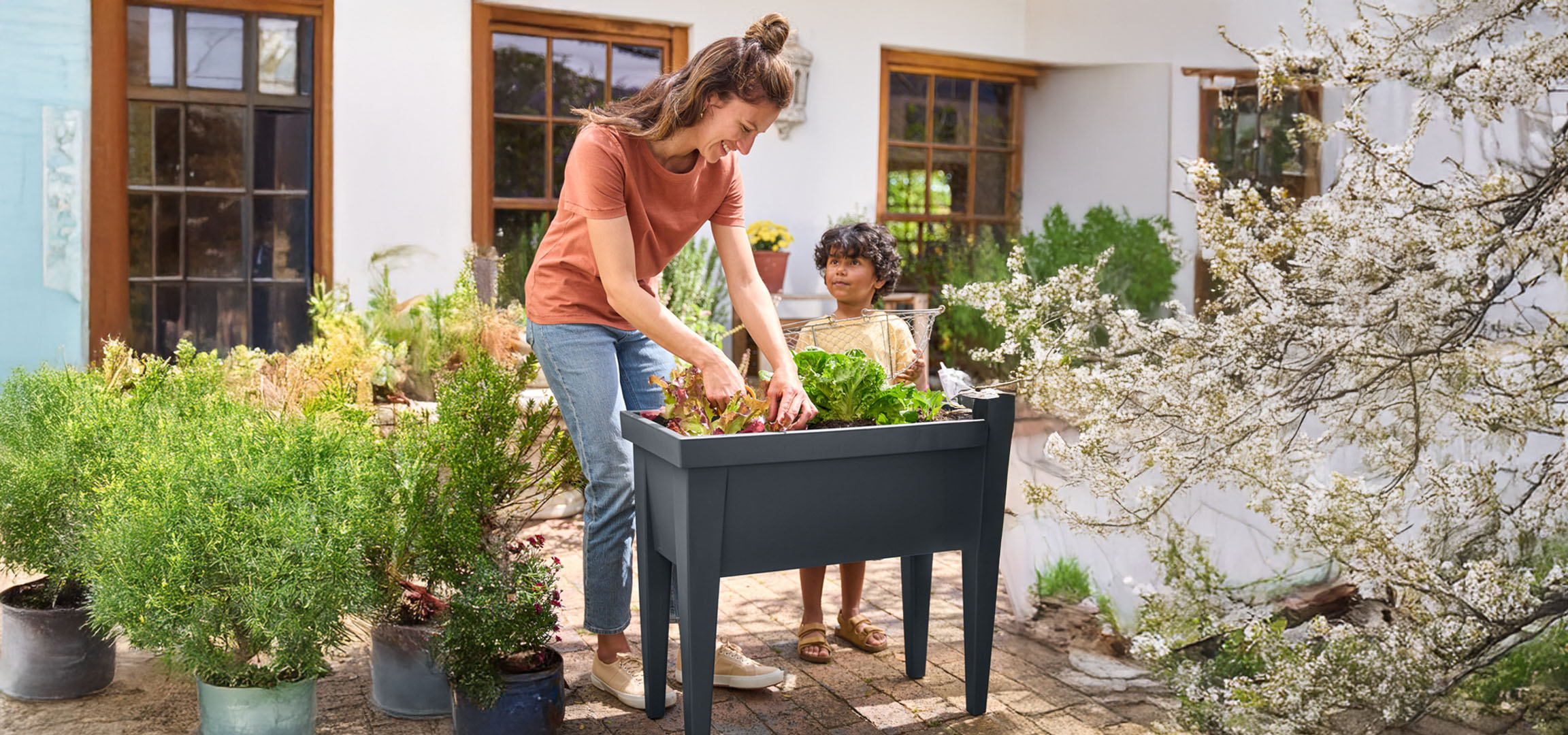Filling and planting raised plant beds: how it works
A raised plant bed has many advantages: It offers a comfortable height to work at, can transform balconies and patios into true plant paradises and still allow a garden with poor soil to blossom. Several things need to be considered to ensure that the raised plant bed is a source of joy for a long time. Important tips on building up the layers, planting correctly and choosing the right flowers, herbs and vegetables can be found below.
Contents
Why is it so important to fill and plant the raised bed correctly?
Raised beds are particularly popular because of their high concentration of nutrients. With a raised bed, flowers, herbs and vegetables can also be grown in locations where the natural soil does not allow for successful planting. To ensure that the important nutrients are available, filling the raised bed is crucial. Only with the right layers and the natural rotting process will the raised bed become a real nutrient powerhouse.
What does the structure of a raised bed look like?
A fertile raised bed needs more than simple soil in a wooden box. The different layers provide nutrients and warmth. A well-constructed raised bed can produce bountiful harvests and magnificent flowers for up to five years.
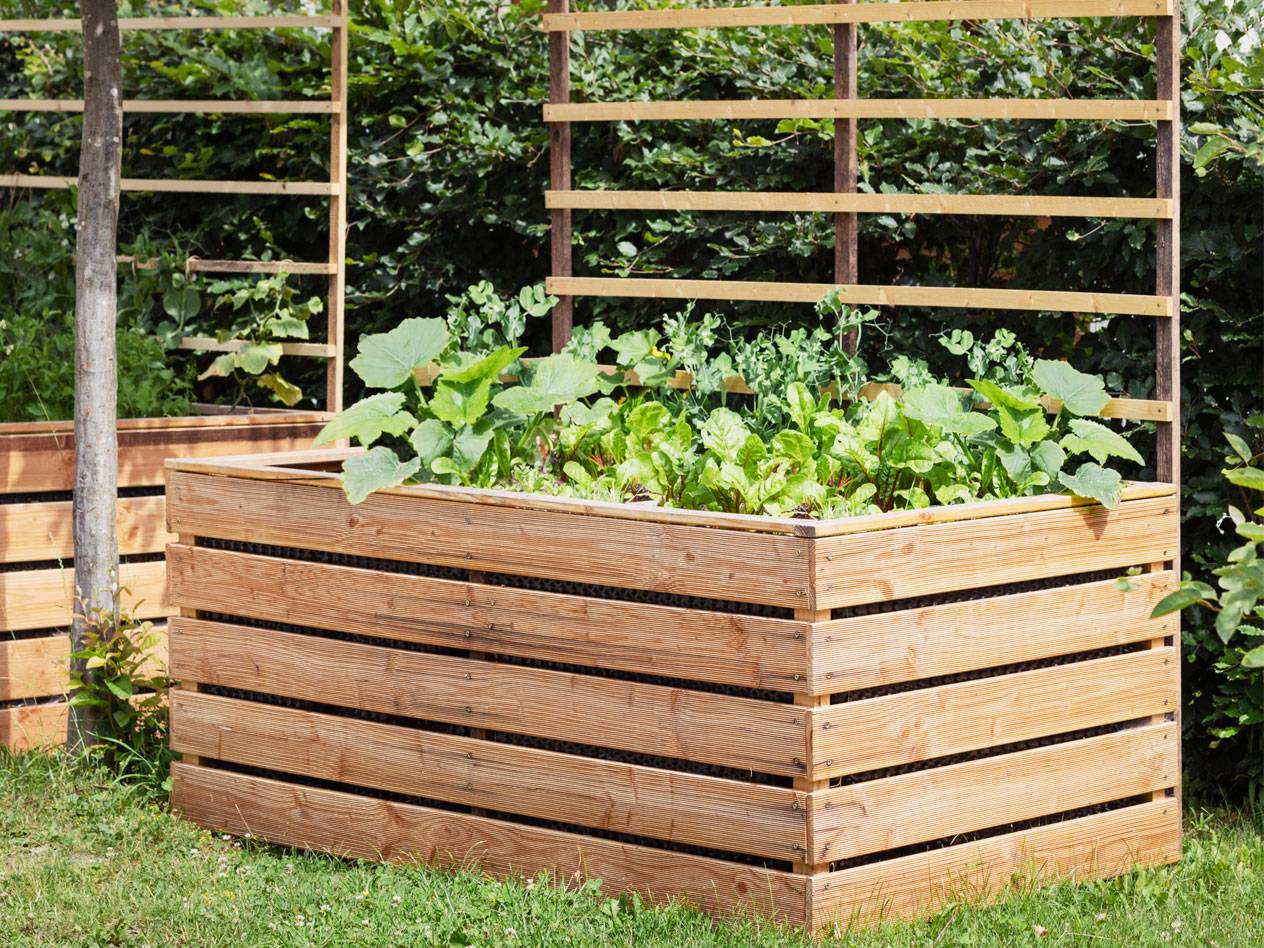
Layers of the raised plant bed
The raised bed consists of three to five layers, depending on what you want to grow. Three layers are sufficient for herbs and flowers; five layers are recommended for vegetables. Each layer has a different function. The height of the layers depends on the overall height of the raised bed. However, they should not be too thin, otherwise the nutrient density will not last that long.
Building a raised plant bed with five layers
Rough pruning
Aeration, avoidance of waterlogging
Layer height: 25cm to 30cm
Fine pruning or turf sod
Barrier function, prevents the upper layers from slipping through
Layer height: 15cm to 20cm
Coarse compost or alternatives
Heat, nutrients through rotting
Layer height: 20cm
Rotting compost
Direct nutrient supply
Layer height: 10cm
Soil
Planting layer
Layer height: Residual height, at least 20cm
The layers of compost or alternatives such as horse or cow manure are particularly important for the success of a raised plant bed. Under no circumstances should this layer be replaced by soil or anything else. If you only want to plant flowers, you can also fill your raised bed completely with potting soil - in this case, the compost and barrier layer are not necessary.
Instructions: How do I fill a raised plant bed?

Step 1: Attaching a rodent grid
Before you fill the first proper layer in the raised bed, you should attach a rodent grid to the bottom. This grid keeps rodents and other intruders away from the soil, roots and plants.
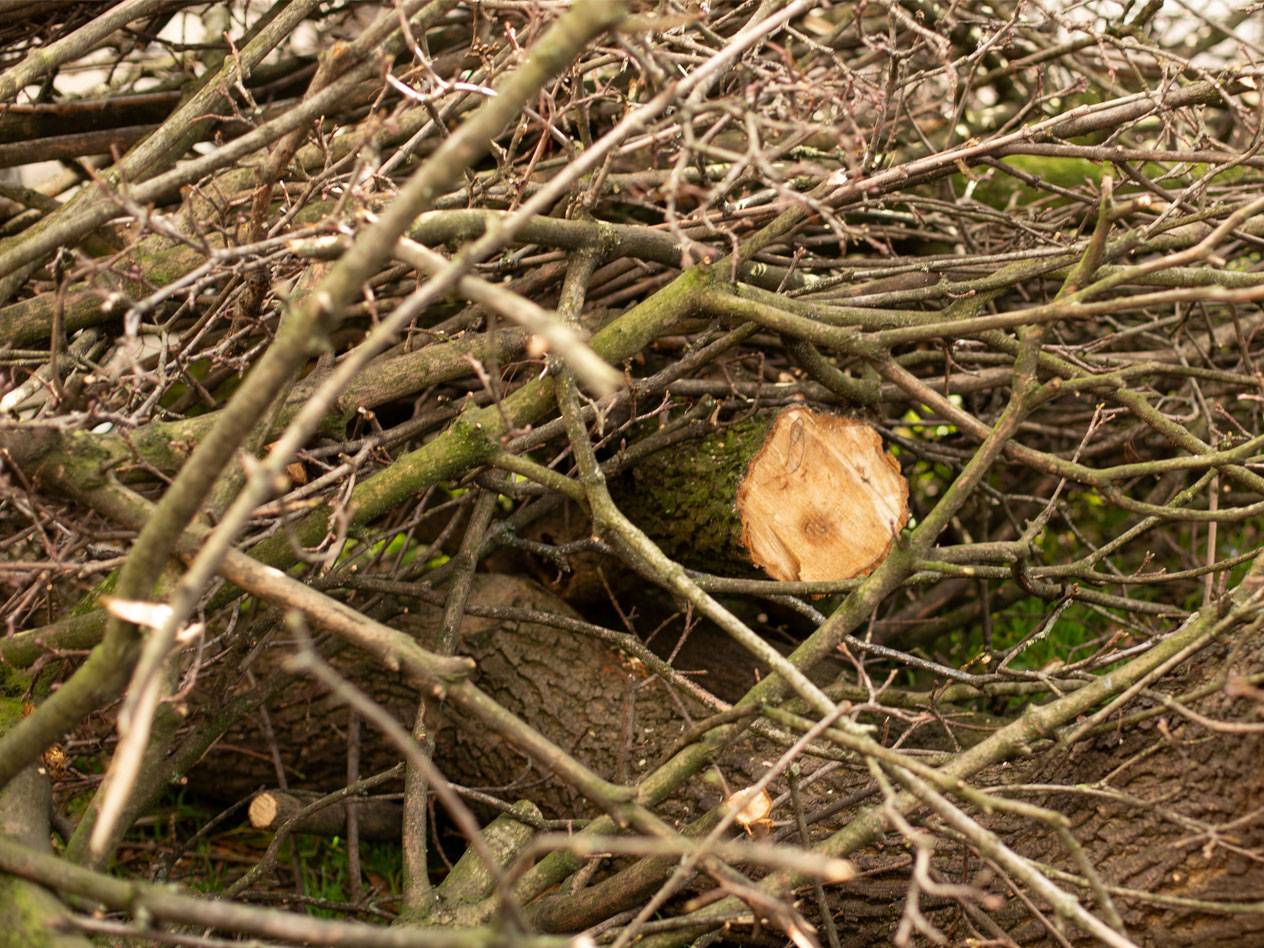
Step 2: Filling in the wood core layer
Fill the first layer on top of the rodent grid - the so-called wood core layer. It can consist of small branches, shrub waste and other tree and hedge cuttings. This layer must not be compact or firm, as its loose structure has several advantages: it leaves space for beneficial soil organisms, ensures that moisture drains away and allows good aeration of the raised bed.
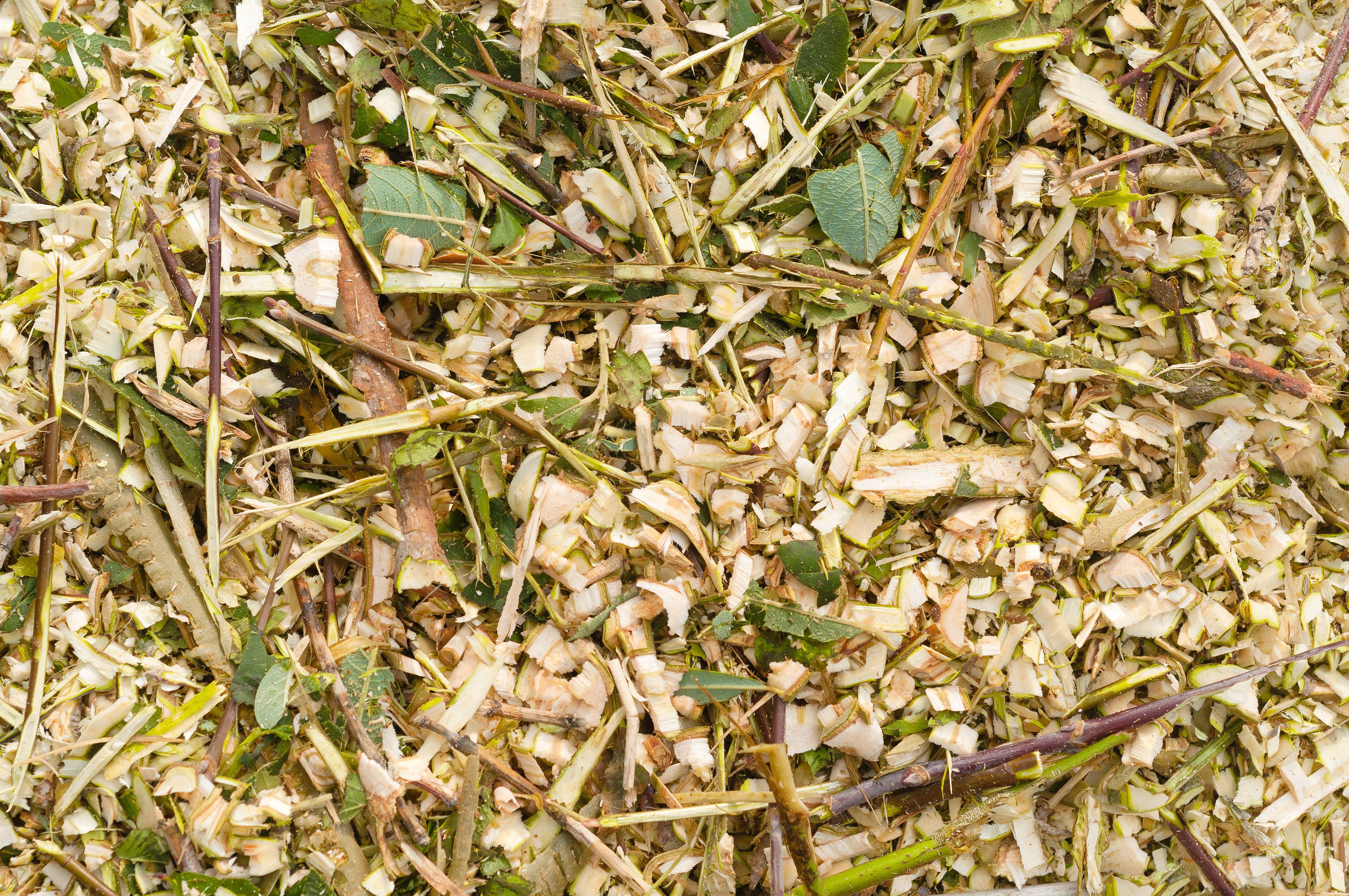
Step 3: Fill in the intermediate layer
The second layer separates the wood core layer from the initial growing medium. Chopped branches, small hedge trimmings or shredded shrub remains are suitable for this. Alternatively, you can also use an inverted sod. This intermediate layer ensures that the upper layers do not slip through to the bottom.
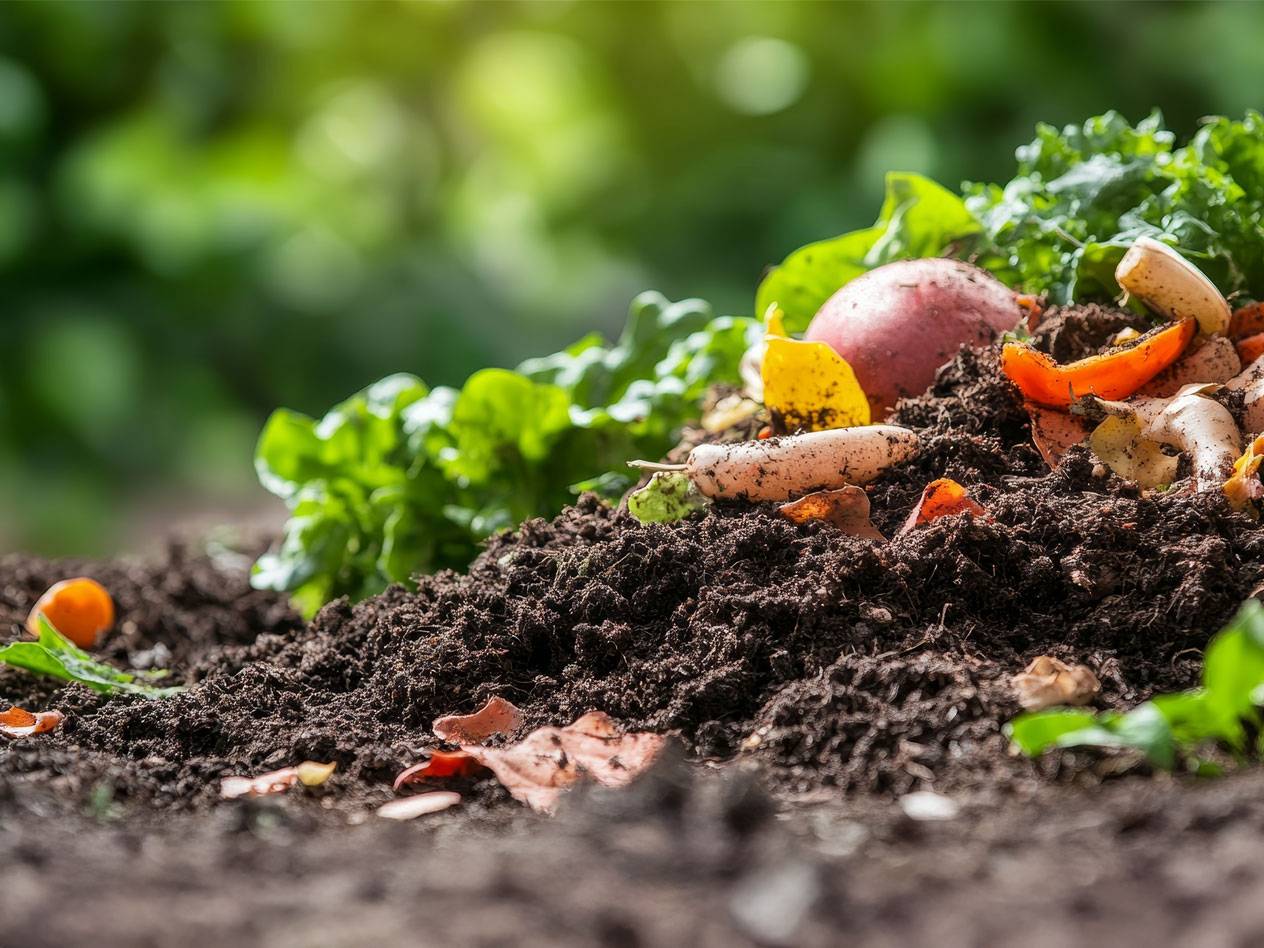
Step 4: Fill with compost
Next, fill in the compost. The right mixture is important here. Ideally, you should have both rotted compost or manure and coarse, slightly fresher"" compost available. This will ensure that sufficient nutrients are always released into the soil over a longer period of time. You can either make your own compost or compostable material from garden waste at home using a composter or buy it in your local Lidl store.
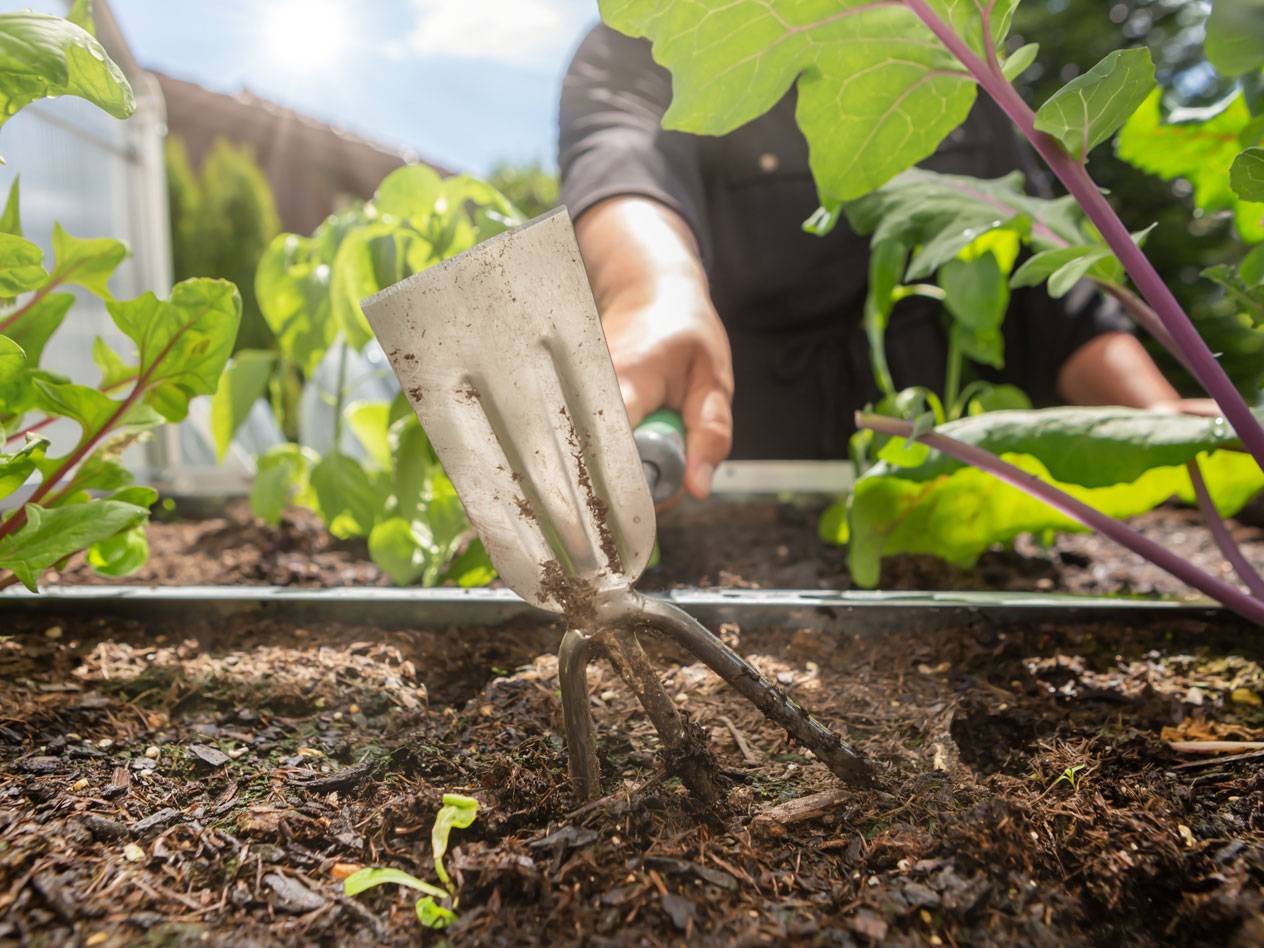
Step 5: Fill up with soil
The last layer consists of high-quality soil. You can either take the soil from your own garden or buy it in your local Lidl. The soil layer should not be too thin, as this is where you will ultimately plant your flowers, herbs and vegetables.
What can I plant in my raised bed?
Thanks to its high nutrient density, a raised bed is suitable for many different types of planting. Flowers and herbs as well as different types of vegetables can thrive in raised beds. Whether pre-grown plants or seeds are used is a matter of taste: there is a larger selection of seeds, but the effort involved is greater. Pre-grown plants can be planted quickly, but are more expensive to buy. In addition to choosing the right varieties, the time of planting and the order of fruiting also play an important role.
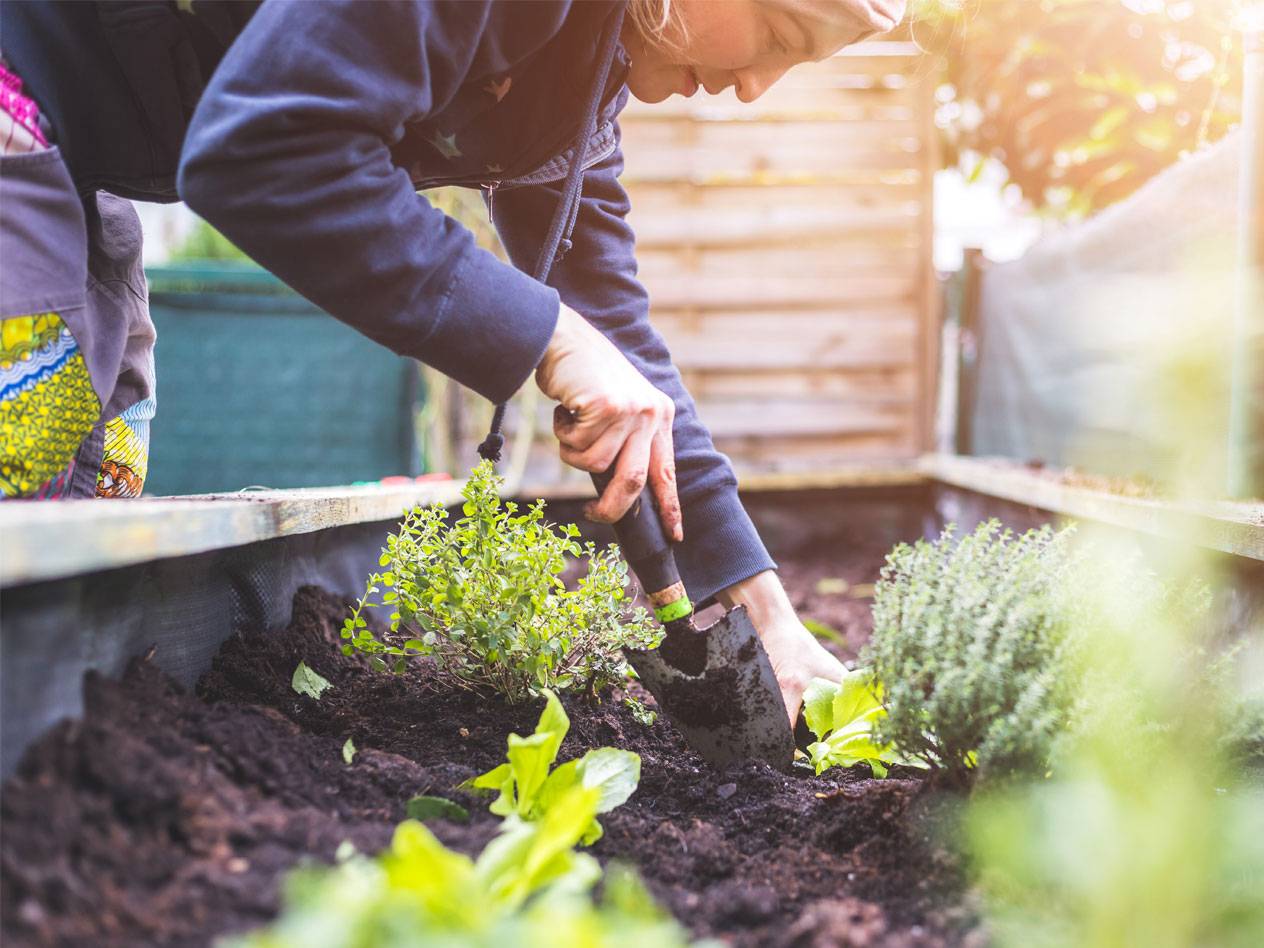
What should I pay attention to when planting the raised plant bed in the first and second year?
Although the nutrient content in raised beds is higher than in normal ground-level beds, the nutrient reserves are also limited here. To get the most out of the raised bed, so-called heavy feeders should therefore be planted in the first year. These are plants that need a lot of nutrients. In the second year and in the following years, medium and weak growers can be selected that can cope well with the decreasing nutrient content of the soil.
Planting raised beds with flowers
If you only want to plant your raised bed with flowers, you can theoretically leave off layering and fill the entire bed with potting soil. However, flowers also benefit from the nutrient-rich layered soil.
Planting raised beds with herbs
Herbs are not particularly hungry for nutrients. There are therefore no heavy feeders among them. Medium and weak growers can be placed in the raised bed right from the start and mixed with vegetables.
Planting raised beds with vegetables
When planting vegetables in a raised bed, it is important to ensure a good mix of plants. Different plants have different needs and can therefore complement each other well. Mixed cultivation tables show which varieties get along particularly well. As a rule, the more plants are related to each other, the less suitable they are for mixed cultivation.
Raised bed calendar: What do I plant when?
With vegetables in particular it is important to plant at the right time so that you end up with a high-yielding harvest.
- March: radishes, rocket, lettuce, spinach, radish, parsley
- April: spring onions, onions, leeks
- May: Pre-grown young plants such as zucchini, peppers and chili
- June/July: broccoli, kohlrabi, carrots
- August: radicchio, endive salad
- September/October: celery, parsley, rocket
- December: endive, chard, spinach
Instructions: How do I plant a raised bed?
Planting a raised bed is very easy if you follow a few basic rules. The easiest way is to plant flowers.
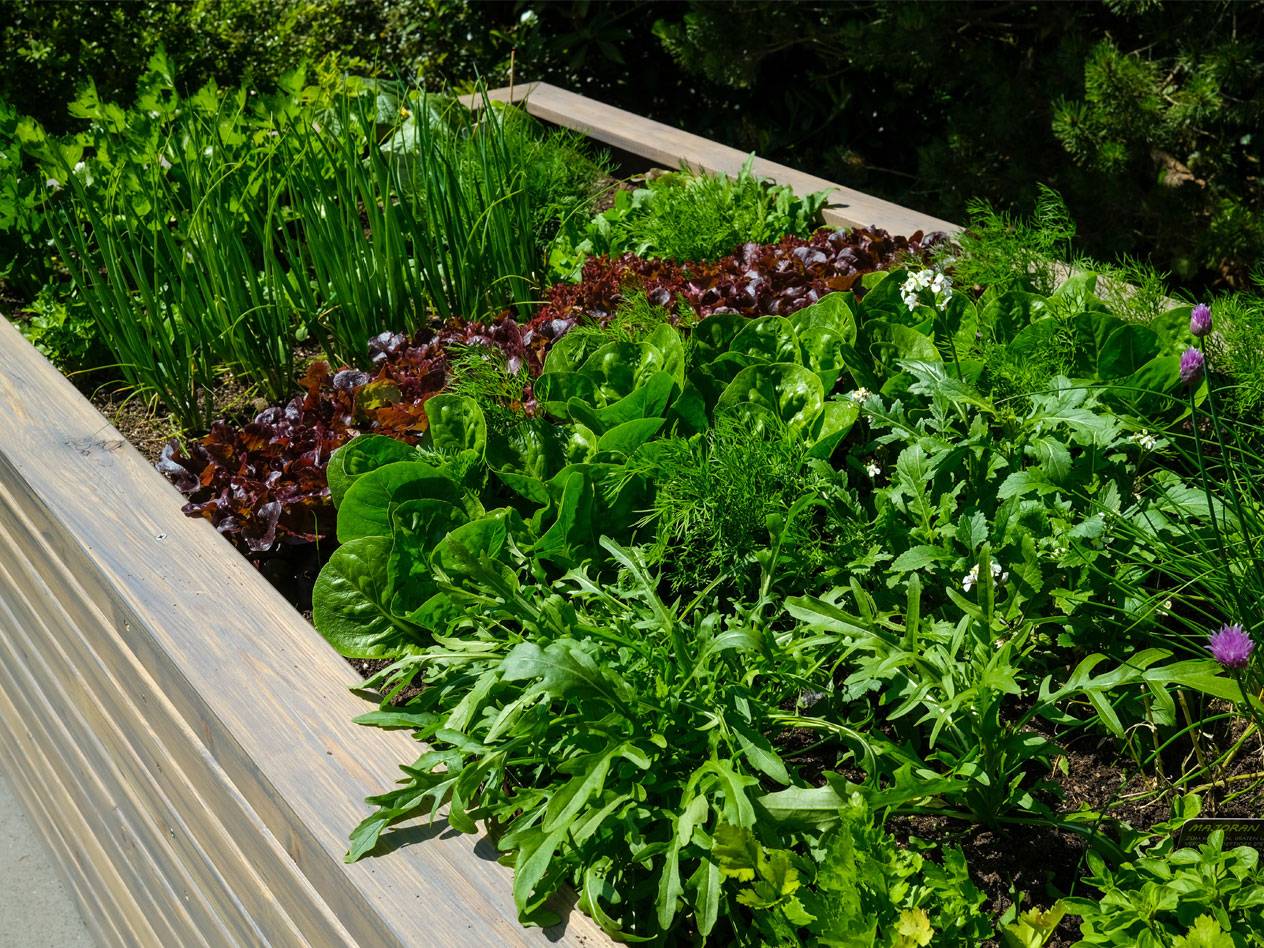
Step 1: Get an overview
Get an overview of the flowers available to you and make a plan. Think about where you want to plant which flowers. Large flowers such as sunflowers, for example, are best planted in the centre of the bed, while small flowers and hanging plants look good at the side. To ensure that your raised bed is always in full bloom, make sure that the planted flowers bloom at the same time.
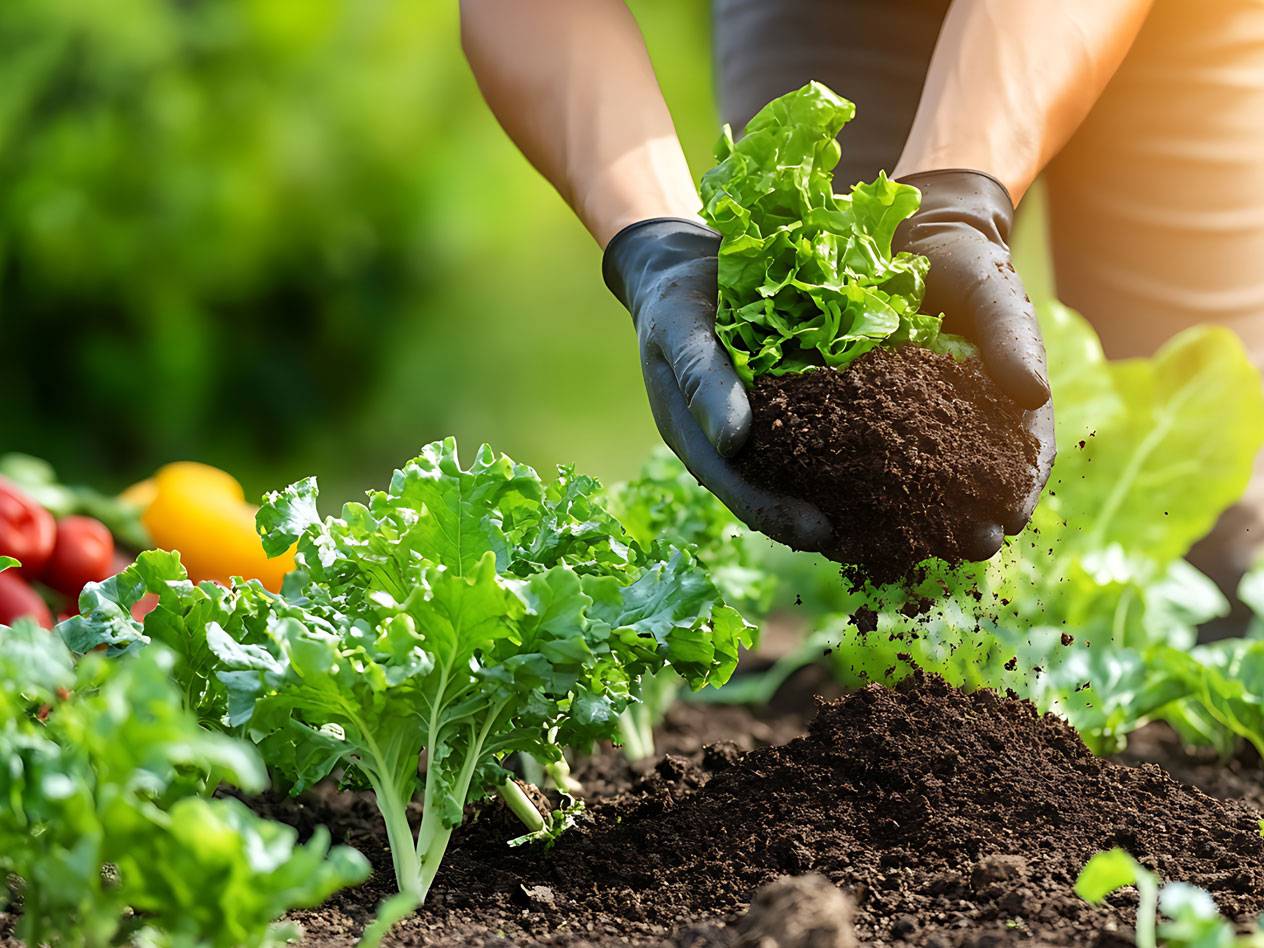
Step 2: Planting
Once you have decided which flower should go where, you can start planting. If you are using seeds, loosen the soil with a small rake, scatter the seeds on the soil and press them down lightly. You must then keep the soil moist at all times. You will always find precise sowing instructions on the respective packaging. If you want to use purchased or home-grown plants, make small holes in the soil with your hand or a flower trowel, place the plant in them and carefully fill the hole again.
Questions and answers
A raised bed can be placed in a sunny spot or in the shade. The prevailing light conditions influence the planting: if you plant sunflowers in a shady area, you will have little joy from your raised bed. The choice of soil, on the other hand, is irrelevant. Raised beds are therefore ideal for successfully planting in corners with damp patches or heavy clay soil.
To make the raised plant bed winterproof, all plants that are not frost-resistant must first be harvested. Then the soil layer is loosened with a small garden hoe and covered with hay. Finally, cover the bed with roofing felt or dark foil. If you don't want to give up gardening in winter, you can turn the raised bed into a kind of greenhouse with the help of a foil tunnel. Here you can grow hardy crops such as leeks, winter spinach or parsnips during the cold season.
Ordinary potting soil is sufficient for a raised flower bed. However, if vegetables are to be grown and harvested, you may need a little more. Your own garden can serve as a source of soil here. If you can't or don't want to use this, there is a large selection of soil types available in your local Lidl. Classic garden soil with an organic fertilizer is just as suitable as special raised bed soil.
